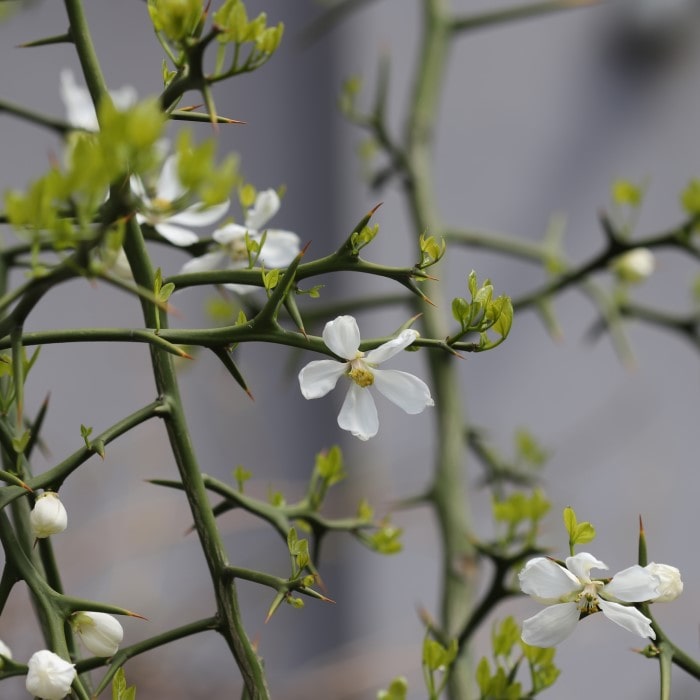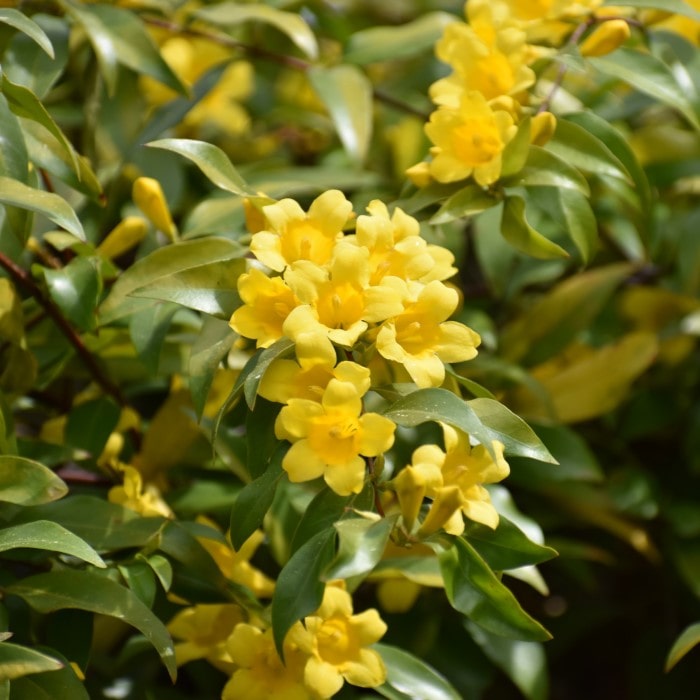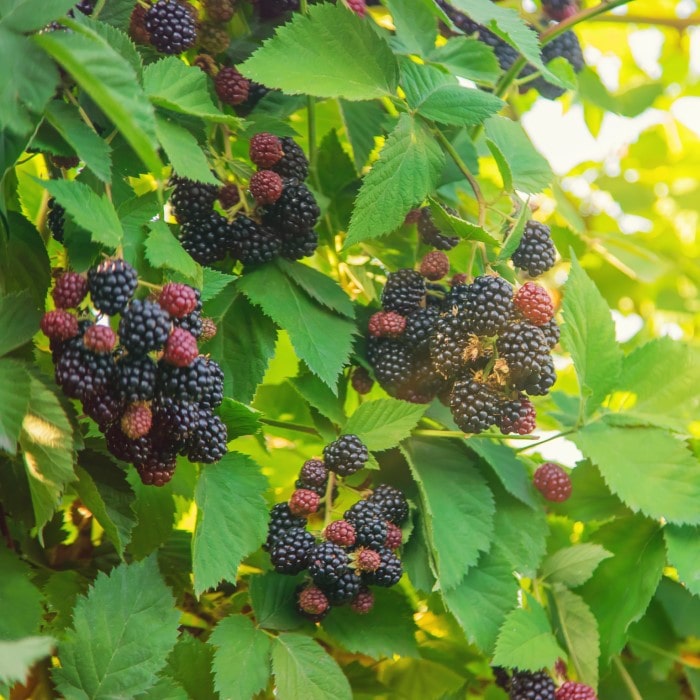Alocasia gagaena 'California'
Overview
Uses: Houseplant, patio plant, or outdoor plant (in approved tropical zones)
Benefits: Dwarf Alocasia! Air purifier: removes toxins from the air. Scalloped-edge leaves up to 2' in length! Unique and beautiful growth patterns, colors, and foliage. Easy to take care of.
USDA Hardiness Zones: 9 - 11
Sun: Bright indirect to partial shade. Avoid strong, full sun. A minimum 6 hours of bright indirect sun daily is suggested.
Life Cycle: Perennial
Mature Height: 2' - 4'
Mature Width: 2' - 4'
Summary
Massive evergreen leaves, air purification, fast growth, and low maintenance!
Alocasia gagaena 'California'—commonly referred to as Elephant Ear—is a fast growing, beautiful evergreen perennial with robust leaves and strong stems. This Alocasia variety has an upright growth habit with arrow-shaped leaves and unique veining. Its stunning foliage is sure to be a showstopper in your home, patio, or tropical garden!
Alocasia 'California' is known to occasionally bloom, predominately in late summer and early fall, with delicate, white, lily-like flowers. Each flower is carefully outlined with bright green edges, creating an eye-catching contrast. Plants grown outdoors are much more likely to bloom than plants grown indoors.
Alocasia's often develop yellow leaves after experiencing trauma (such as shipping or repotting)—this is typical—and the plant will regain its vigor once its rhizome is able to reestablish itself.
Care
How to Water an Alocasia
We suggest watering an indoor Alocasia gagaena 'California' every 4-7 days between spring and fall—attempting to keep the soil moist but not wet.
Like other Alocasias, it's sensitive to overwatering.
The plant will not drink as much during periods of slow growth such as winter, during which it's suggested to shift the frequency of watering to a weekly to bi-weekly schedule. During this schedule it's important to attempt to allow the upper 1/3 of soil in the pot to dry between watering.
Like many other plants, too much watering will result in the yellowing of stems and leaves, eventually followed by root rot should the wet conditions persist.
Although this plant is considered to be drought resistant, too little water will result in the browning of branches and leaves, followed by eventual death if kept dry.
How Much Humidity Does Alocasia 'California' Like?
Alocasia gagaena 'California' prefers moderate to high humidity (above 50% RH) and does well with daily misting.
Humidifiers and pebble beds may be used to supplement humidity around the plant.
How Much Sun Do Alocasia 'California' Like?
Avoid placing Alocasia gagaena 'California' in areas that receive extended periods of strong, direct sunlight.
The best lighting is provided by bright indirect light as direct light could cause leaf burn.
Alocasias do great with some shade, but need a degree of bright, indirect sun.
Too little light will result in poor growth, discoloration, and possible death.
What is the Ideal Temperature for an Alocasia 'California'?
Alocasia gagaena 'California' prefer warmer temperatures and will likely die with extended exposure to temperatures below 40 °F.
It's best to keep this plant in temperatures above 55°F to ensure its beauty and the integrity of its growth; however the optimal temperature range of this houseplant is between 65°F and 85°F.
As such, this plant thrives outdoors year round in USDA zones 9-11, and will may not survive living outdoors over winter in USDA zone 8 or cooler.
What is the Best Soil for an Alocasia 'California'?
Alocasia gagaena 'California' prefers well draining, loamy soils that hold moisture. Our potting soil is a great growing medium for this plant.
How Do I Fertilize an Alocasia 'California'?
Alocasia gagaena 'California' should be fertilized on a monthly basis between early spring and mid-fall.
Winter fertilizations may be required on a less frequent basis if the plant is in an environment where the temperature and the amount of light that it's exposed to don't promote fast growth.
We suggest using our slow release fertilizer, a balanced liquid fertilizer, or fish emulsion—being careful not to overfertilize.
Trimming and Maintaining an Alocasia 'California'
It's often not necessary to trim your Alocasia gagaena 'California' unless there is unsightly damage or if the plant has spindly growth.
Trimming is best done in the spring or fall, and should be accomplished with the use of a clean, sanitized, and sharp trimming scissors. We suggest lightly fertilizing after any extensive pruning.
Biannual pruning will encourage bushier growth, while not trimming the plant will encourage leggier growth.
Like most other plants, it's advised that any dead or dying leaves and stems be removed from the plant to keep it as healthy and clean as possible.
How to Repot an Alocasia 'California'
Alocasia gagaena 'California' does not do well rootbound so it's suggested that you repot your plant if its roots begin to crowd its pot.
You can repot your plant by placing the entire root ball into a larger pot then softly breaking up its root structure around the edges of its root ball prior to surrounding it with a lightly packed, medium porosity potting mix. It's advised to only slightly increase the pot size when repotting.
How to Propagate an Alocasia 'California'
The propagation of Alocasia gagaena 'California' is accomplished through the use of division.
Size
What Size of Alocasia 'California' is for Sale Online?
The Alocasia gagaena 'California' that we sell online will ship in a greenhouse grade grow pot. Each plant will be appropriately sized for its pot. Please contact us with any specific questions.
How Big do Alocasia 'California' Grow?
The size of Alocasia gagaena 'California' at maturity is typically no larger than 4' tall and wide. Its leaves can reach up to 2' long on mature plants!
Additional Information
Common Names of Alocasia 'California'
-
Elephant Ear
-
Elephant Ear Plant
-
Asian Taro
-
Night-Scented Lily
Toxicity and Risks of Alocasia 'California'
Alocasia gagaena 'California' is known to be toxic to both pets and people.
Vomiting, diarrhea, excessive salivation, abdominal pain, kidney failure, and/or death can occur after the ingestion of this plant—which contains needle-shaped crystals of calcium oxalate called raphides (known to cause kidney stones in humans).
Allergic dermatitis (skin inflammation) and swelling of the skin can occur after repeated skin exposure to this plant's sap.

















